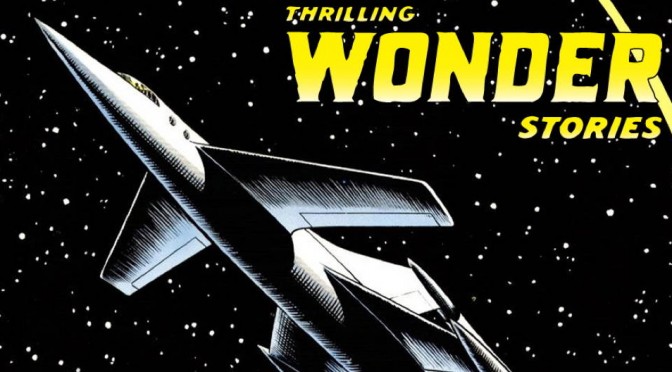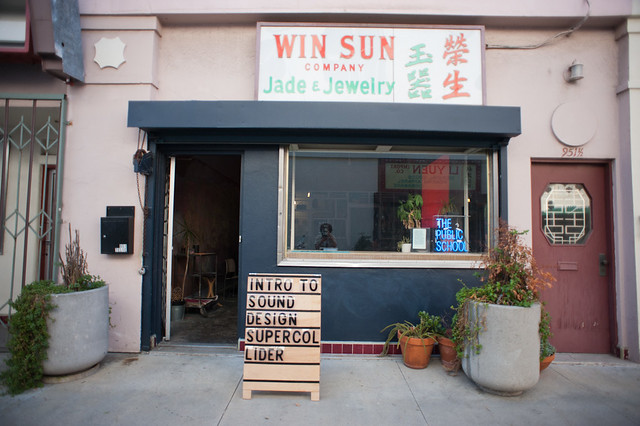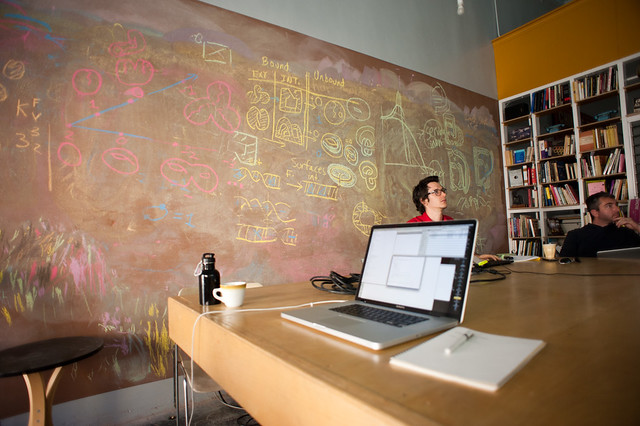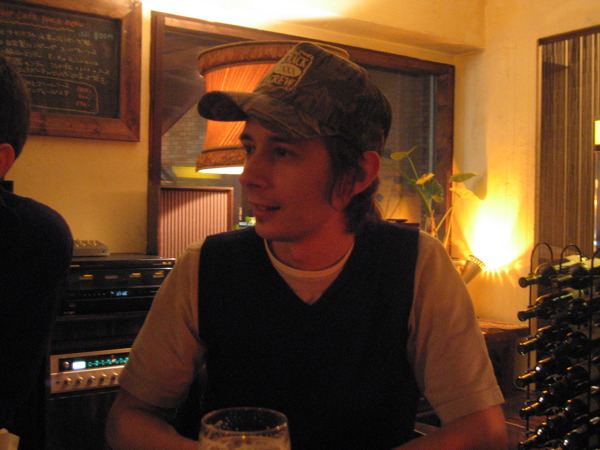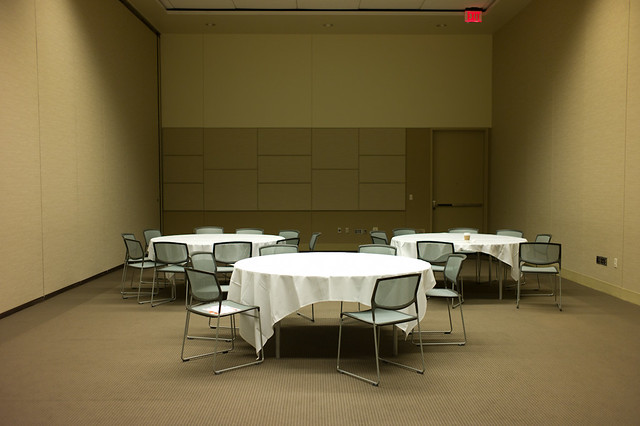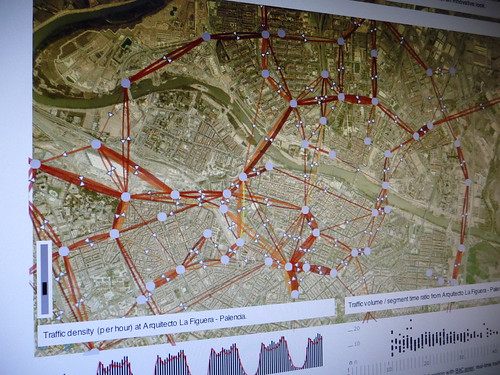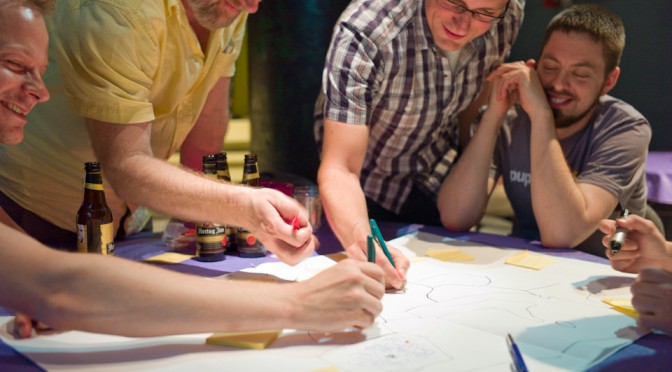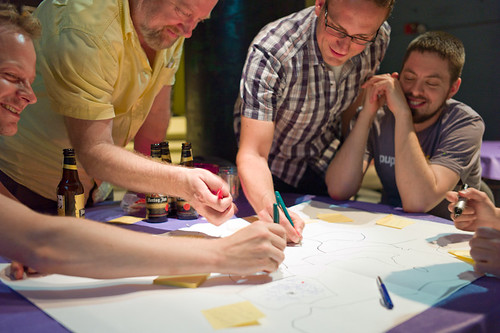WONDER STORIES 3
Live in London and New York Oct 28th
Created by
Liam Young [Tomorrows Thoughts Today]
And Geoff Manaugh [BLDGBLOG]
In Association with the Architectural Association, Studio-X NYC, Popular Science
We have always regaled ourselves with speculative stories of a day yet to come. In these polemic visions we furnish the fictional spaces of tomorrow with objects and ideas that at the same time chronicle the contradictions, inconsistencies, flaws and frailties of the everyday. Slipping suggestively between the real and the imagined these narratives offer a distanced view from which to survey the consequences of various social, environmental and technological scenarios.
Wonder Stories chronicles such tales in a sci fi storytelling jam with musical interludes, live demonstrations and illustrious speakers from the fields of science, art and technology presenting their visions of the near future. Join our ensemble of mad scientists, literary astronauts, design mystics, graphic cowboys, mavericks, visionaries and luminaries for an evening of wondrous possibilities and dark cautionary tales.
For the first time, Wonder Stories will be simultaneously hosted in London and New York and Popular Science will join the Architectural Association and Studio X NYC in coordinating the event this year. Join us for the third event in the series as we chart a course from science fiction to science fact with talks, a hands on taxidermy workshop, animatronic guests, swarm robotics demonstrations, datascapes walking tour and live movie soundscapes.
Free to all. OCT 28 1200 – 2200 at the Architectural Association London and OCT 28/29 at Studio-X NYC
The event will be streamed live streamed here and you can follow the twitter feed with #tws3
Hosted by
LIAM YOUNG (‘Tomorrows Thoughts Today’ and the AA’s ‘Unknown Fields Division’)
MATT JONES (‘BERG London’, Design technologists)
VINCENZO NATALI
Director of Splice, Cube, and forthcoming films based on J.G. Ballard’s High-Rise and Neuromancer by William Gibson
BRUCE STERLING
Scifi author and futurist
KEVIN SLAVIN
Game designer and spatial theorist
ANDY LOCKLEY
Academy Award-winning visual effects supervisor for Inception,compositing/2D supervisor for Batman Begins and Children of Men
PHILIP BEESLEY
Digital media artist and experimental architect
CHRISTIAN LORENZ SCHEURER
Concept artist and illustrator for video games and films such as The Matrix, Dark City, The Fifth Element, and Superman Returns
JULIAN BLEECKER
Designer, technologist, and researcher at the Near Future Laboratory
CHARLIE TUESDAY GATES
Taxidermy artist and sculptor, to lead a live taxidermy workshop
DR RODERICH GROSS AND THE ‘NATURAL ROBOTICS LAB’
Head of the Natural Robotics Lab at the University of Sheffield,to lead a live Swarm Robotics demonstration
GAVIN ROTHERY
Concept artist for Moon, directed by Duncan Jones
GUSTAV HOEGEN
Animatronics engineer for Hellboy, Clash of the Titans, and Ridley Scott’s forthcoming film Prometheus
SPOV
Motion graphics artists for Discovery Channel’s Future Weapons and Project Earth
ZELIG SOUND
Music, composition, and sound design for film and television
RADIOPHONIC
Throughout the day we will be accompanied by electronic tonalities from Radiophonic
Hosted by
GEOFF MANAUGH (BLDGBLOG, STUDIO-X NYC)
NICOLA TWILLEY (EDIBLE GEOGRAPHY, STUDIO-X NYC)
POPULAR SCIENCE
BJARKE INGELS
Architect, WSJ Magazine 2011 architectural innovator of the year, and author of Yes Is More: An Archicomic on Architectural Evolution
NICHOLAS DE MONCHAUX
Architect and author of Spacesuit: Fashioning Apollo
HARI KUNZRU
Novelist and author of Gods Without Men and The Impressionist
JAMES FLEMING
Historian and author of Fixing The Sky: The Checkered History of Weather and Climate Control
ANDREW BLUM
Journalist and author of Tubes: A Journey to the Center of the Internet
DAVID BENJAMIN
Architect and co-director of The Living
MARC KAUFMAN
Science writer and author of First Contact: Scientific Breakthroughs in the Hunt for Life Beyond Earth
DEBBIE CHACHRA
Researcher and educator in biological materials and engineering design
JACE CLAYTON AND LINDSAY CUFF OF NETTLE
Nettle’s latest album, El Resplandor, is a speculative soundtrack for an unmade remake of The Shining, set in a luxury hotel in Dubai
CHRIS WOEBKEN
Interaction designer
SETH FLETCHER
Science writer and author of Bottled Lightning: Superbatteries, Electric Cars, and the New Lithium Economy
SIMONE FERRACINA
Architect and author of Organs Everywhere
DAVE GRACER
Insect agriculturalist at Small Stock Foods
HOD LIPSON
Researcher in evolutionary robotics and the future of 3D printing
ANDREW HESSEL
Science writer and open-source biologist, focusing on bacterial genomics
CARLOS OLGUIN
Designer at Autodesk Research working on the intersection of bio-nanotechnology and 3D visualization
[Image credit ‘Inception’ dir. Christopher Nolan]
